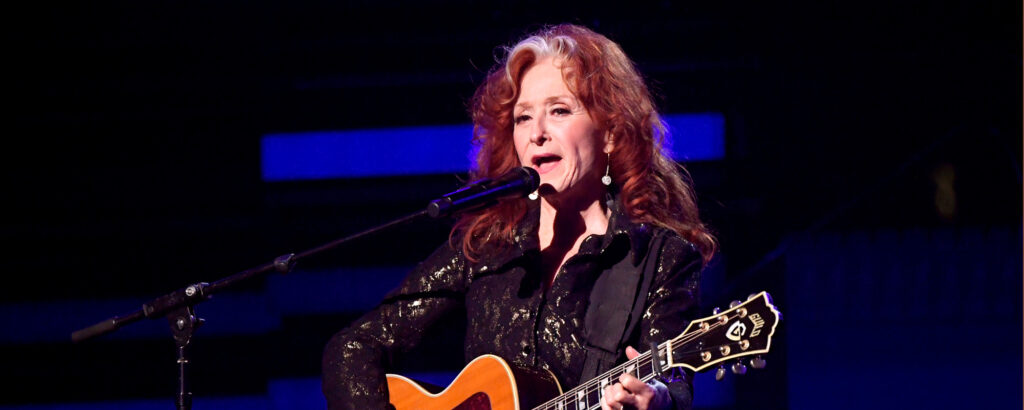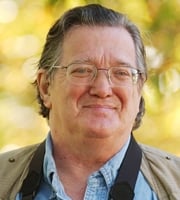
Grateful Dead guitarists Jerry Garcia and Bob Weir were both known to play slide guitar on various songs within the band’s live repertoire. Listen to early versions of “Row Jimmy” for examples of Garcia’s slide playing. Some early versions of “Row Jimmy” saw Weir on slide, but more prevalent examples of Bobby on slide occurred during “Althea” and on some of the blues numbers the band covered like “Little Red Rooster.”
Despite having two slide guitarist in the band, the Grateful Dead are not the first group to come to mind when the subject of slide guitar playing comes up.
Dozens of early bluesmen like Blind Willie Johnson, R.L. Burnside, Elmore James and Muddy Waters, are more commonly associated with slide guitar, along with those they influenced like Duane Allman, Mike Bloomfield, and Elvin Bishop among many others. The next generation of slide guitarists also included Ry Cooder and Little Feat’s Lowell George, who in turn were influential on another talented slide guitarist, Bonnie Raitt.

Raitt, who celebrates her 74th birthday today, would take those influences and establish herself among the top slide players on record. Raitt talked about her development as a slide guitarist with Guitar World in 2022.
“I heard John Hammond’s slide guitar first, then ‘Little Red Rooster’ and Elmore James,” Raitt told GW. “The Rolling Stones were my first exposure to real slide guitar, but the blues guys really fired me up. Ry [Cooder] is still a god to me. Ry and Lowell George are the biggest influences on my playing. I love the Delta blues: Son House, Fred McDowell, Robert Johnson, Johnny Shines, John Hammond. But Ry wrote the book on making it sound like your voice, which is what I try to do. He and Stevie Ray Vaughan are the greatest guitar players I’ve ever heard.”
Raitt was also asked about the impact Lowell George had on her slide style, to which she replied:
“He showed me how to use a compressor to let the note last longer, and that really impacted my slide style. I already kind of had my own style and was playing electric, but I wanted to know how he got the note to hold. Lowell was just remarkable. I can’t come close to Ry or Lowell, but their lyricism has continued to be an incredible inspiration to me.
“I had never heard anybody like Little Feat when a friend played me Sailing Shoes – and I just about fell over. I loved them so much. And the first two Taj Mahal records are right up there in the pantheon of people that have taken blues and reinvented it and pushed it someplace new.”
According to a 2016 The New Yorker profile of Raitt:
“Like George, Raitt plays a Stratocaster that’s run through a compressor on the way to the amp, an effect that narrows the sound and makes it sustain longer. Like him, she favors an open tuning known as taro-patch tuning, in reference to its Hawaiian origins. (One way to get taro patch is to take a guitar that’s in standard tuning and tune to an A-major chord, so that the A, or the tonic note, is found on the first, third, and fifth strings.)
One difference between the originally self-taught Raitt’s style of slide guitar playing and George’s approach, is that she wears her slide on the ring finger of her left hand. Most other slide players wear the piece on their ring finger, or like George, pinky finger. Raitt’s approach is the reason Jason Isbell plays slide using his middle finger.
Raitt appeared on several Little Feat albums, and George was meant to produce one of her records but those plans were eventually scrapped. George, who died in 1979 at 34, contributed to many records beyond those with he recorded with Little Feat, producing the Grateful Dead’s 1978 album, Shakedown Street.
While Lowell George’s collaborations with the Grateful Dead were restricted to the studio, there was one instance when Bonnie Raitt joined the band and demonstrated her the slide guitar style he so greatly influenced.
On New Year’s Eve 1989, the Dead brought Raitt out during the first set of their concert at Oakland-Alameda County Coliseum Arena in Oakland, California. Raitt was the only guitarist playing slide on “Big Boss Man,” the Jimmy Reed-popularized blues classic. First sung by Ron “Pigpen” McKernan, Garcia began singing lead on “Big Boss Man” with the Dead following the keyboardist’s death in 1973 and the song’s return to the rotation in 1981.
December 31, 1989 was the only time Raitt performed in public with the Grateful Dead, but the masterful slide guitarist had previously performed with Weir and Garcia at Carlos Santana’s Blues For Salvador Concert in 1988. Raitt also sat in with the Jerry Garcia Band in 1987.

Watch Bonnie Raitt’s lone sit-in with the Grateful Dead below:









 Visitors Today : 50
Visitors Today : 50 Who's Online : 0
Who's Online : 0


































































































